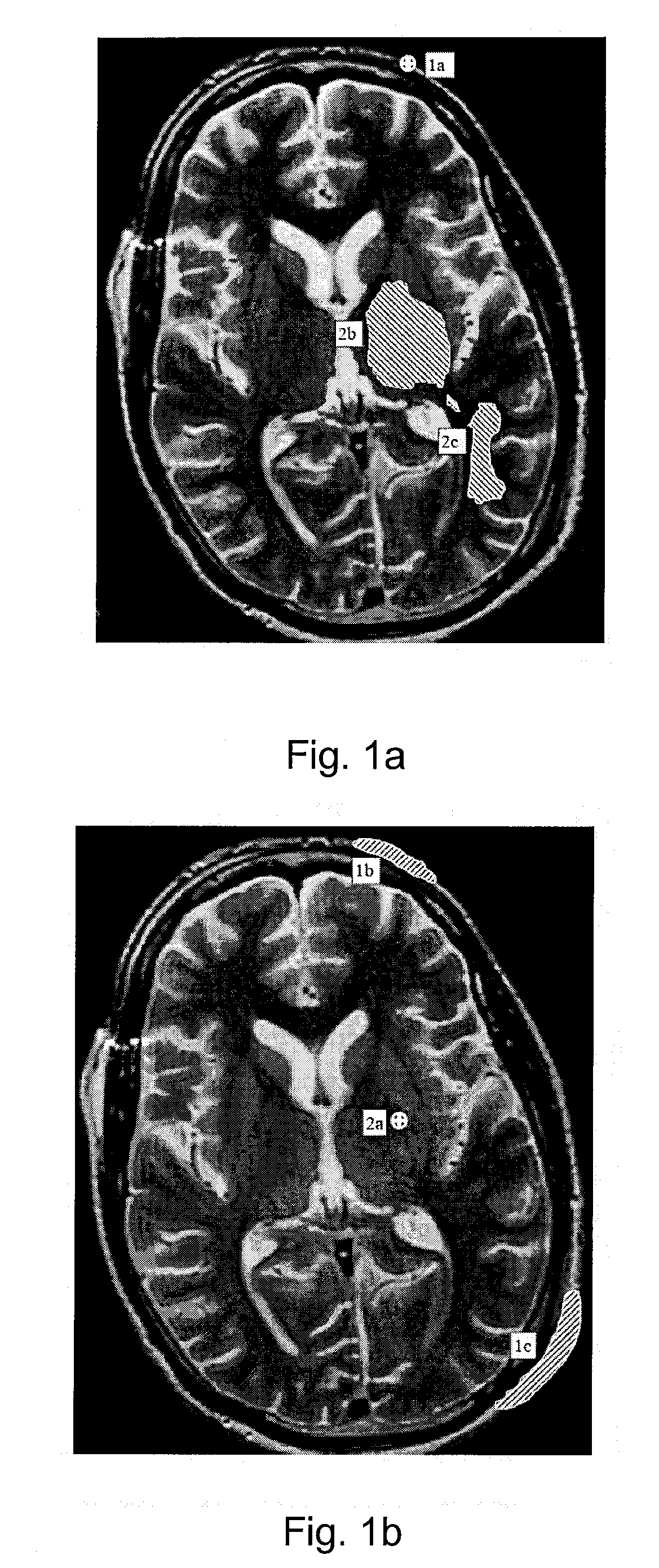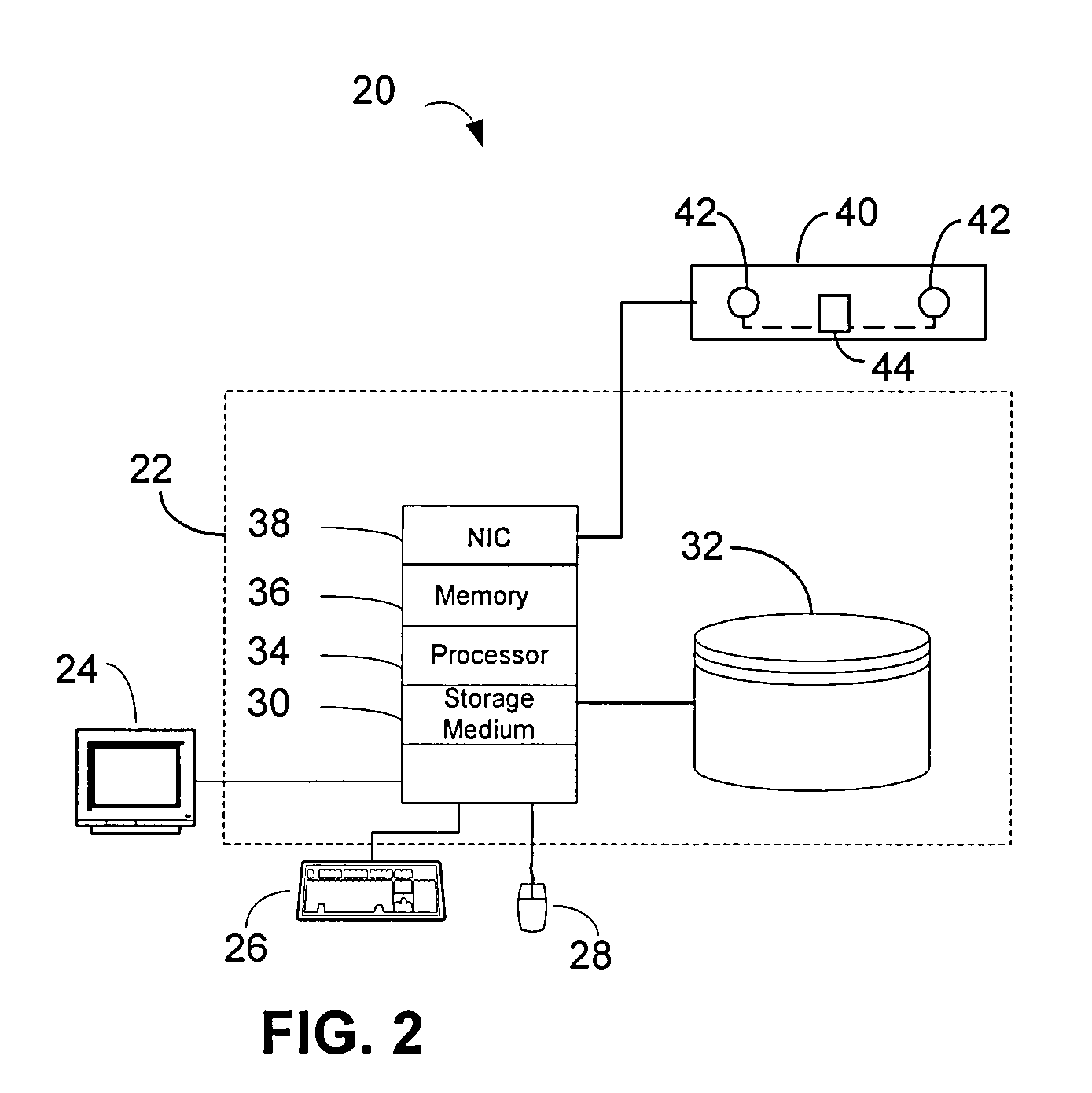Inverse catheter planning
- Summary
- Abstract
- Description
- Claims
- Application Information
AI Technical Summary
Benefits of technology
Problems solved by technology
Method used
Image
Examples
Embodiment Construction
[0034]FIG. 1A shows a first exemplary recording of the structure and anatomy of a brain, wherein an entry point 1a is specified, for example by a user, in the represented structure and anatomy of the brain. Possible target areas 2b, 2c of the catheter can be determined from the indicated entry point 1a and, for example, lie in such a way that catheter positioning guidelines and the structure and / or the anatomy of the brain can be taken into account when a catheter is inserted or introduced. The catheter positioning guidelines can be the distance between the catheter tip or the catheter delivery section and the surface of the brain, or the distances between the catheter, the catheter tip or the catheter delivery section and characteristic regions of the brain such as cavities, hollows, sulci, or ventricles. The target areas 2b, 2c, determined taking into consideration the catheter positioning guidelines and the individual structure and anatomy of the brain, can be represented in the ...
PUM
 Login to View More
Login to View More Abstract
Description
Claims
Application Information
 Login to View More
Login to View More - R&D
- Intellectual Property
- Life Sciences
- Materials
- Tech Scout
- Unparalleled Data Quality
- Higher Quality Content
- 60% Fewer Hallucinations
Browse by: Latest US Patents, China's latest patents, Technical Efficacy Thesaurus, Application Domain, Technology Topic, Popular Technical Reports.
© 2025 PatSnap. All rights reserved.Legal|Privacy policy|Modern Slavery Act Transparency Statement|Sitemap|About US| Contact US: help@patsnap.com



